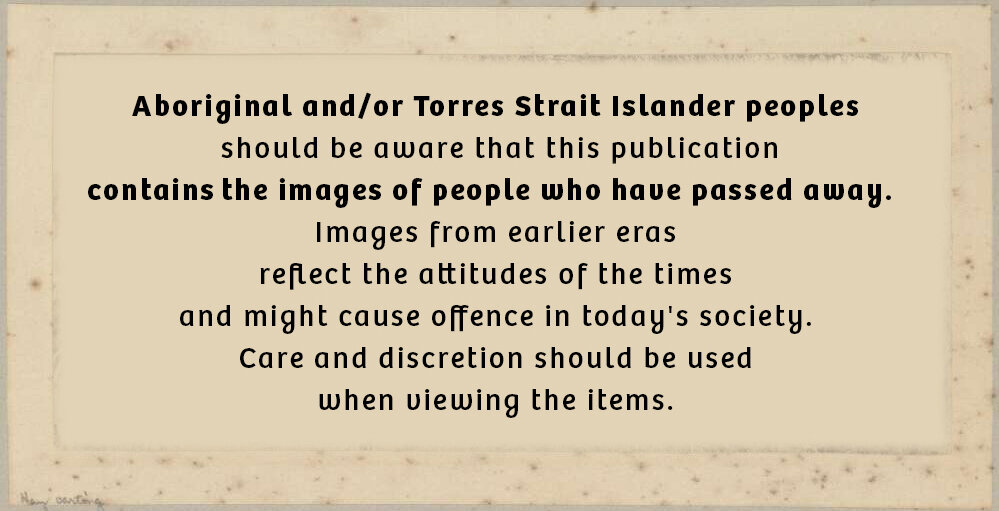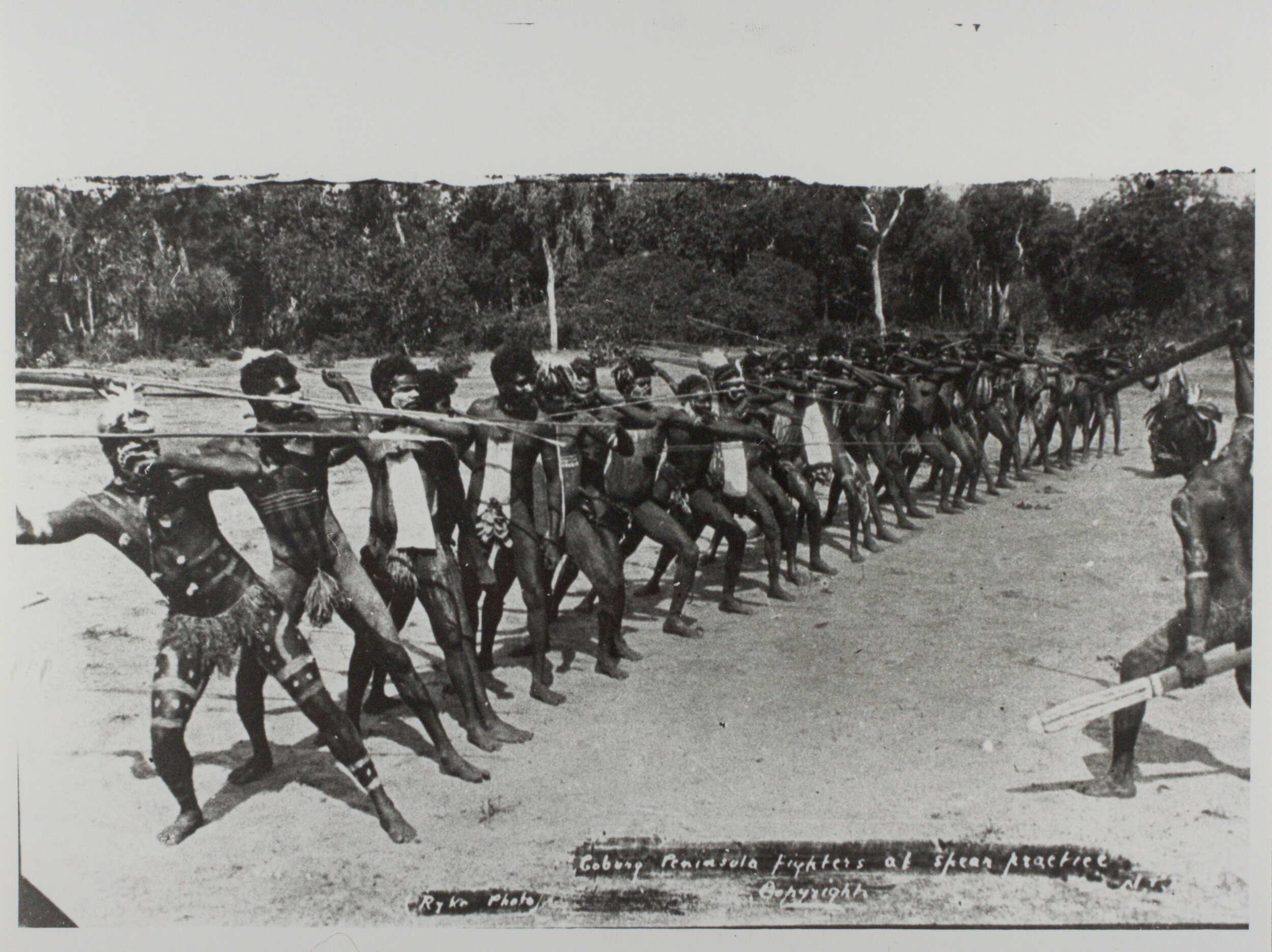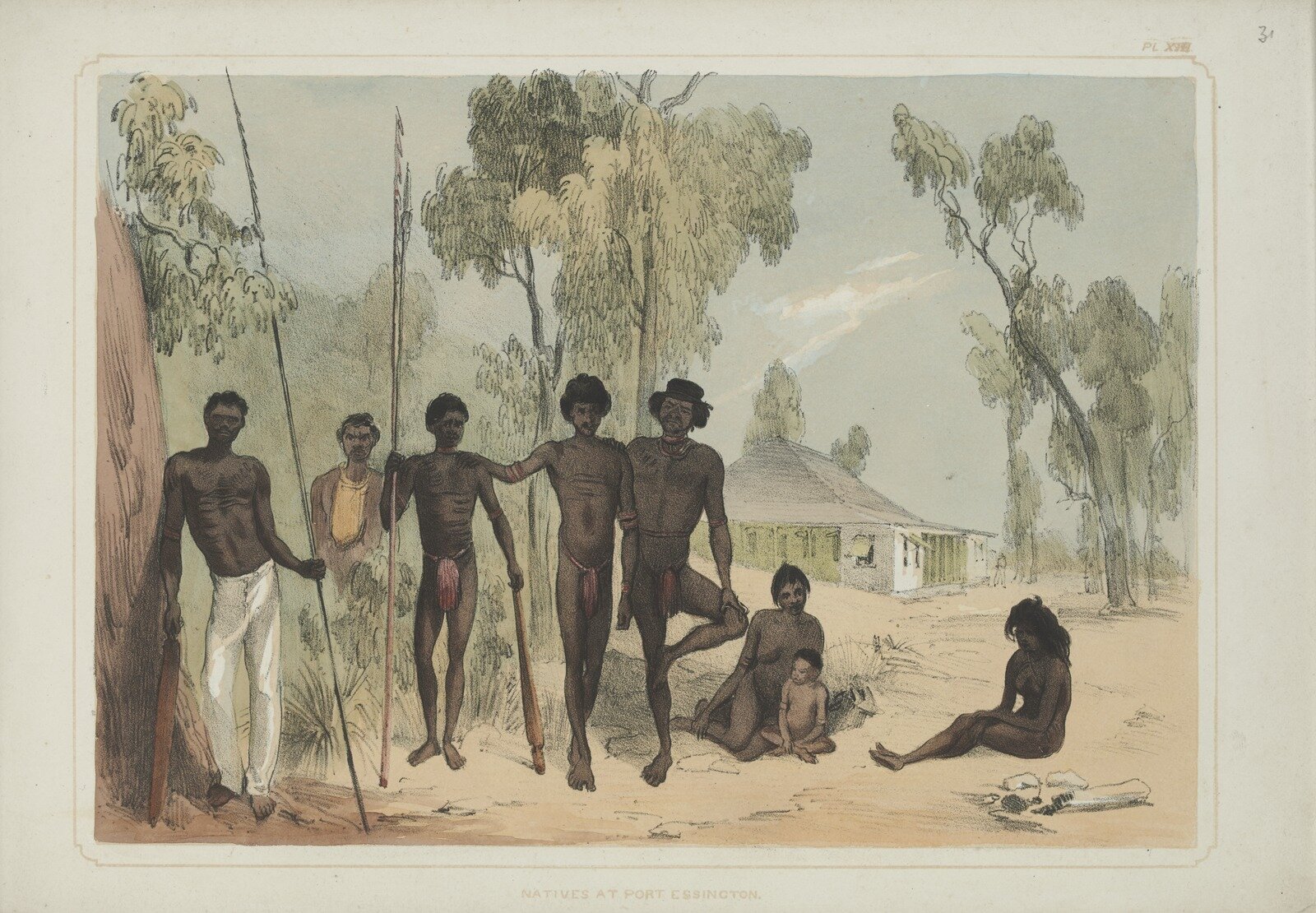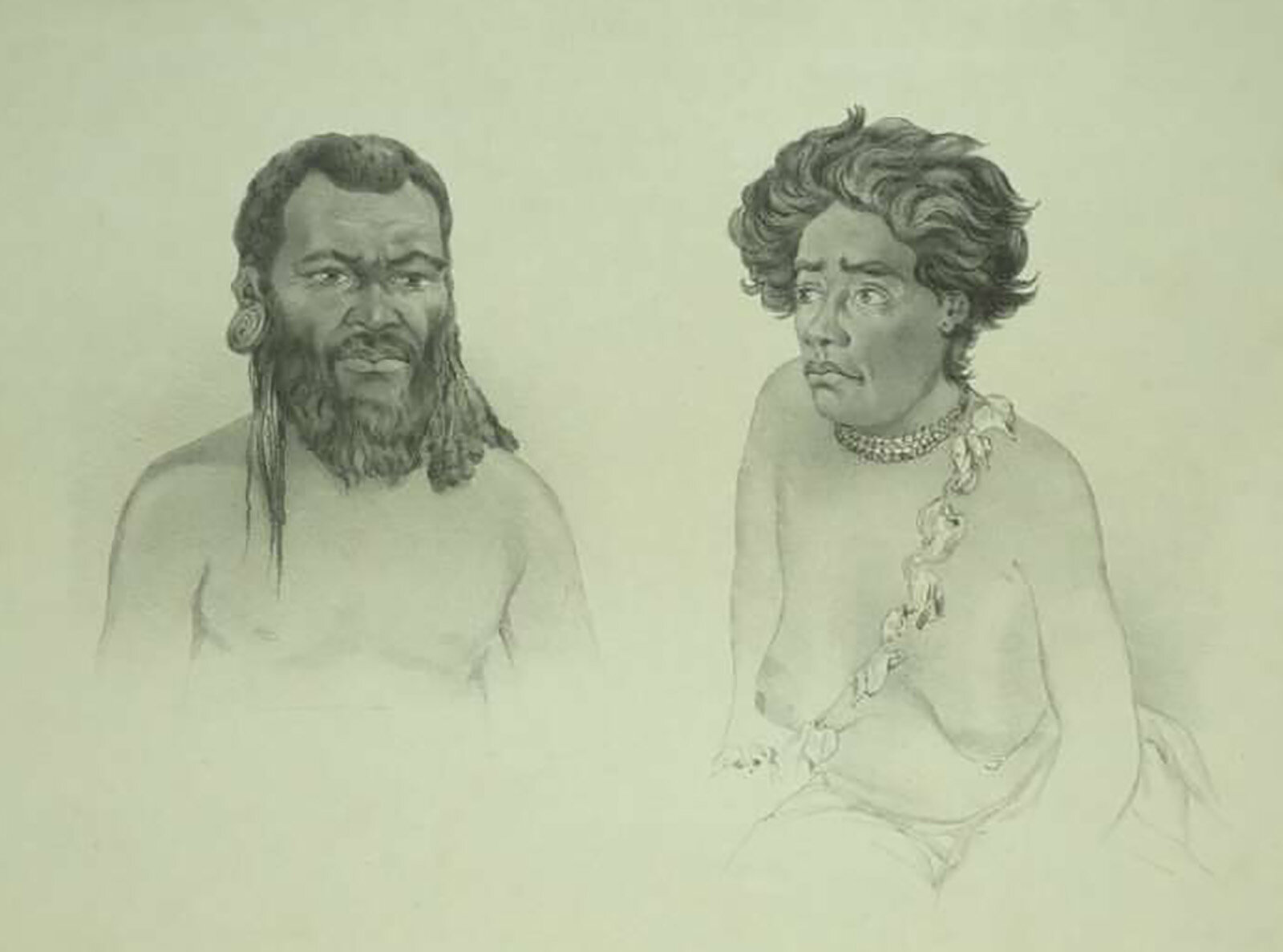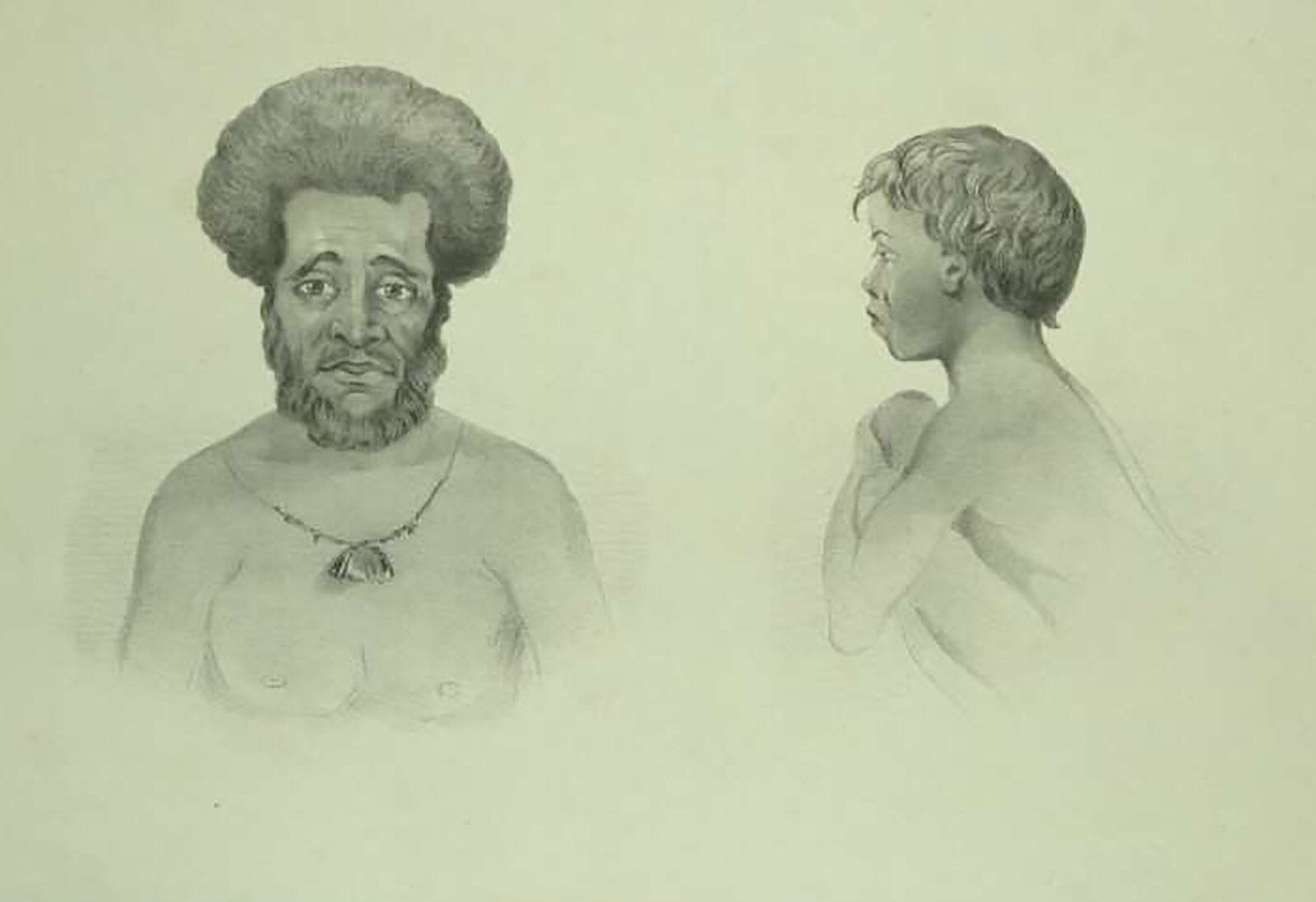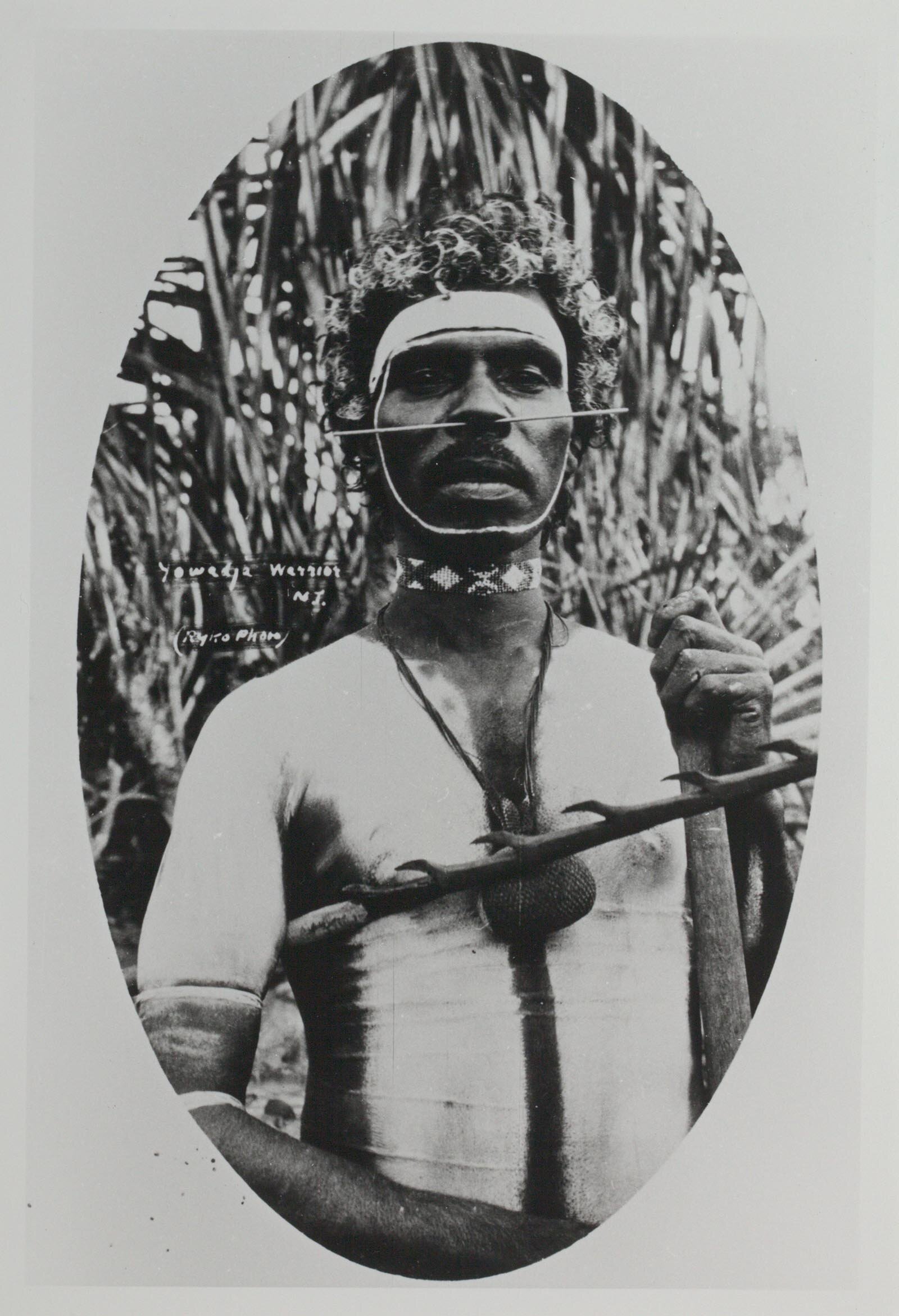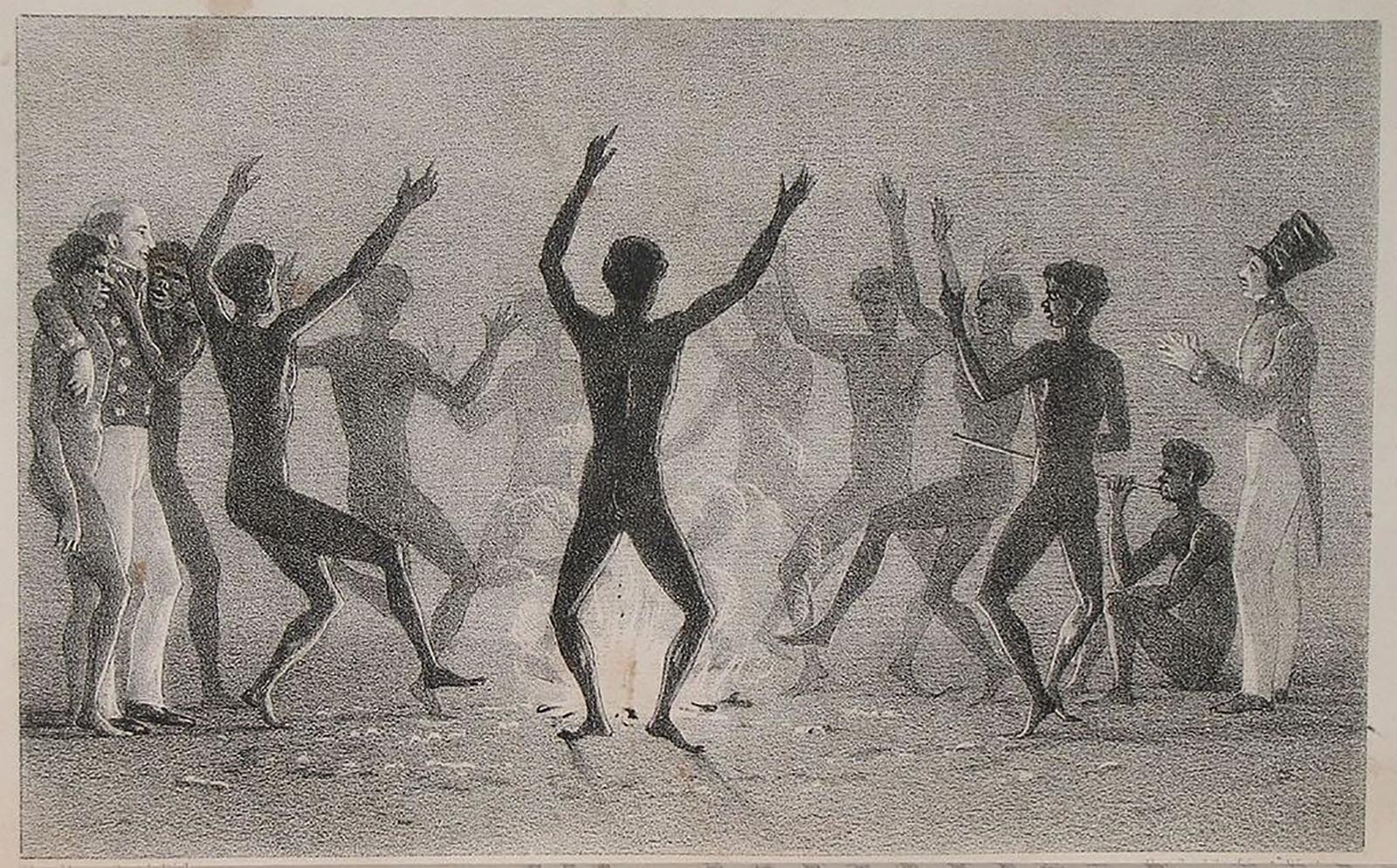Raffles Bay, Cobourg Peninsula History: Aboriginal Peoples
VIEW IN RAFFLES BAY, with Croker's Island in the distance. (P.P. King) Photo 4
Fort Wellington. Cobourg Peninsula
The Cobourg Peninsula is home to Garig Gunak Barlu National Park. This is a joint management program between the Iwaidja speaking peoples of the Cobourg Peninsula and the NT Government. Most people visit this park to take in the remote natural beauty on offer. However, the area has a rich past and was especially important to the British Empire who were desperate to establish a settlement in the north of Australia. Most tourists to the park are aware of the establishment of the settlement of Victoria, in 1838, in Port Essington, which lasted ten years before it was abandoned. Few tourists are aware of an earlier attempt at settlement in 1828 in the adjacent cove of Raffles Bay where Fort Wellington a British settlement was established for a short period.
Four attempts were made to settle the Top End of Australia and all failed before Darwin succeeding. These were:
Fort Dundas (1824–1828) on Melville Island
Fort Wellington (1827–1829) Raffles Bay, Cobourg Peninsula
Fort Victoria or Victoria (1838–1849) Port Essington, Cobourg Peninsula
Escape Cliffs (1864–1867) Cape Hotham peninsula, Adelaide River, near Darwin
Darwin was originally founded as Palmerston, although the port was always known as Port Darwin, with the first settlement in 1869.
What can we determine about the early history of Cobourg?
Aboriginal Nation on the Cobourg Peninsula
A lack of any published material originating from the traditional owners of the land makes it difficult to provide insight into the early history of this nation. ‘The Traditional Owners of Cobourg Peninsula (the Arrarrkbi) have lived on and used the Peninsula for between 40 000 and 60 000 years. At present, the Arrarrkbi live on the Peninsula and continue many of the cultural practices which have been handed down over many generations. The core traditional owner group is about 50-60 people with many more people having connections and cultural obligations associated with the Peninsula’. (1)
‘The main Indigenous language spoken on the Cobourg Peninsula is Iwaidja. The Iwaidja language names and traditional uses (including food, medicine, timber, fibre, dye, and many others) for 269 plants have been recorded. Over 400 Arrarrkbi place names have been recorded on the Cobourg Peninsula. The Iwaidja language is maintained through its everyday use by Arrarrkbi, through documentation, oral history and song, and by using the Iwaidja names for places in the park’. (1)
Aboriginal and/or Torres Strait Islander peoples should be aware that this publication on the history of the Cobourg Peninsula contains the images and text of people who have passed away. Images and text from earlier eras reflect the attitudes of the times and might cause offence in today's society. Care and discretion should be used when viewing and reading the items.
A very detailed description of the Iwaidja speaking nation is provided by Thomas Braidwood Wilson in his writings entitled “Narrative of a Voyage Round the World”. He was a surgeon and explorer who joined the Royal Navy in 1815 and made nine voyages to Australia. Braidwood spent some time at Fort Wellington during its time under Captain Collet Barker. The description is lengthy, and the prejudices of 1828 are evident, but a balanced account is provided. I have included the entire extract as I feel it provides very good insight into a bygone area.
From “Narrative of a Voyage Round the World”. Chapter 11
It may not be out of place now to give a few particulars as to the character of the Aborigines of this part of New Holland. In personal appearance they bear some resemblance to the natives about Port Jackson. They are, however, better made, and possess more intelligent, and perhaps more savage countenances,—they go entirely naked, and their shoulders, breasts, nates (buttocks), and thighs, are ornamented with cicatrices, resembling the braiding of a hussar’s jacket. Their hair is long, generally straight, and powdered with red earth.
Some of them wear a fillet of net work, about two or three inches wide, bound tightly round the waist, and a similar ornament round the head and arms; and sometimes a necklace of net work hanging a considerable length down the back. Many of them have the front tooth in the upper jaw knocked out in the same manner as the Port Jackson natives mentioned by Captain Collins. They paint their faces, and frequently their entire bodies, with red earth; those who are inclined to be dandies, draw one or two longitudinal lines of white, across the forehead, and three similar on each cheek; and a few who appeared to be exquisites, had another white line drawn from the forehead to the tip of the nose. The nasal cartilage is invariably perforated; but it is only on particular occasions that they introduce a bone or piece of wood, and sometimes a feather through it.
In this part of the coast, the natives are divided into three distinct classes, who do not intermarry. The first and highest is named Mandro-gillie, the second, Manbur-gē, and the third, Mandro-willie. The first class assumes a superiority over the others, which is submitted to without reluctance; and those who believe in real difference of blood amongst civilized nations, might find here some apparent ground for such opinion, as the Mandro-gillies were observed to be more polite, and unaffectedly easy in their manners, than the others, who, it was supposed, were neither so shrewd nor so refined: this, however, might be only imaginary.
Mariac (or Wellington as he was named by Captain Stirling), the chief of the country round Raffles Bay and Port Essington, is apparently about thirty-three years of age, nearly five feet eight inches in height: he limps in his walk, but whether from a wound received in foreign or domestic war, I did not learn. His features are regular, and, while he is in a good humour, placid and benign; but, on the least displeasure, which arose frequently from slight causes, they gleamed with savage fury.
He has evidently much sway among his tribe; as even Miago, although so much in favour with us, has been observed to fall back, by a look and a word from his chief. From Miago’s possessing a turn for fun and mimickry, and his unrivalled dexterity in throwing the spear, he had become a favourite in the camp, to the great annoyance of Wellington, who seemed to view him in the same light that Haman did Mordecai.
Wellington gave Captain Barker to understand, that presents to any of his people should only come through himself; and he occasionally exhibited so much ill-humour at deviations from this request, that Captain Barker thought it prudent to cut him for some time.
The natives generally go in parties of from six to twelve; Wellington, however, usually went at some distance apart, accompanied only by one. When the settlement was formed, his attendant was Iacama, a Manburgē (called, by Captain Stirling, Waterloo).
Miago had then the honour of being his travelling companion, but lost the office, from the attention he received in the camp. He was succeeded by Olobo, a Mandrogillie, as timorous as a hare. When we left the settlement, Monanoo, the younger brother of the chief of Croker’s Island, held that distinguished employment
It is difficult to say whether they are accompanied in their excursions by their women, but it is probable that they are not. As far as we could learn, the natives never penetrate far into the interior, generally keeping along the shore, and occasionally cutting across any projecting point of land.
Their food chiefly consists of fish, which they spear very dexterously. Catching turtle seems to be a favourite occupation with them, and they appear quite adepts in that useful art. It is to point the spears, used for that purpose, that they estimate and covet iron so much. They also make use of shell-fish, which it is probably the business of the women to collect. They do not eat the trepang (so desired by Chinese epicures), which is in great abundance all along the coast; but the various native esculent roots and fruits, together with cabbage-palms, afford an agreeable addition to their usual fare[4]. They are very fond of honey, which appears to be in abundance, as they were seldom seen in the settlement without a supply of that article; and when they went into the woods on purpose to procure it, they soon returned successful. Their mode of proceeding was, to watch the movements of the bees, (which requires a keen eye, and long practice), and as soon as they saw them settle on a tree, they proceeded to cut it down, which they effected with their stone hatchets, much quicker than could be imagined. It was for this purpose that Waterloo ran away with the axe, “after having seen and tried its use,” judging, rightly, that it was preferable to his own ley-book (i. e. hatchet).
Respecting the number of the natives, there was no means of forming anything like a correct opinion; yet, judging from the rapidity with which they collected, when one of their countrymen was confined[5], it may be conjectured, that they are by no means thinly spread.
On the occasion alluded to, two natives, who had observed Luga taken into custody, left the settlement, and spread the tidings. In the evening, Wooloogary arrived, accompanied by fifty men at arms. From the time the two natives left, until Wooloogary’s arrival, there was an interval of six hours; they had to walk two or three miles, and to cross and re-cross a strait two miles wide. It is difficult to know whether they would have acted hostilely, had their friend not been released; perhaps they only came to intercede in his behalf, and, according to the custom of civilized politicians, thought their request might be better attended to, by making a formidable appearance.
The only warlike weapons that they used (as far as we could learn) were spears, of different forms and sizes; the largest are from nine to ten feet long: some are serrated, and named burreburai; others are headed with a sharp stone, and named imburbē. They use the throwing stick, named rogorook, which is exactly of the same form, and made in the same manner, as that in use among the natives about Port Jackson. Besides these, they have small sharp-pointed spears, which they chiefly use in the spearing of fish.
We could not learn whether they were in the habit of fighting with each other, or with neighbouring tribes; but spear wounds being by no means uncommon among them, it is probable that, in this respect, they also resemble their eastern Australian brethren. It is well known, however, that they wage continual war with the Malays, who, it was evident, both hated and feared them.
It does not appear that the Marēgĕ (the name given by the Malays to the natives) are altogether to blame, or, at least, they may plead in extenuation that, as the Mulwadie (as they call the Malays) come to their coasts without leave asked or obtained, and carry away the trepang, and, more particularly, the much-valued madjendie (i. e. turtle), it is but fair that they should catch a canoe whenever they can; and that they are pretty successful in this way, appeared very evident to us,—all their canoes being of Malay construction.
Although it may seem rather paradoxical, yet I do not hesitate to say, that the natives, far from being such untameable savages as originally represented, are, in reality, a mild and merciful race of people. They appeared to be fond of their wives and children; at least, they talked of them with much apparent affection. They have frequently interposed their good offices in preventing the soldiers’ children from being chastised: I have seen them run between the mother and child, and beg the former to desist from her (as it appeared to them) unnatural conduct, in punishing her own offspring.
They are, like all uncivilized people, very irascible, but easily pacified; in short, they require to be managed just like children. They were easily taught to distinguish conventional right from wrong, and many instances occurred, which proved their aptitude in this respect. Miago, after having become honest himself, once detected one of his companions endeavouring to secrete a spoon, while they were about to partake of some rice prepared for them[6];—provoked by this ungrateful behaviour, he instantly took it from the delinquent, and sent him away, without permitting him to have any share of the food. On first visiting the settlement, a native would invariably pilfer anything that came in his way that he could secrete, but the article was always brought back by those who knew that such conduct was not tolerated by their civilized visiters.
They also soon learned to place confidence in a person whose word was to be depended on. Some of our people acted, perhaps, in rather a reprehensible manner, by promising the natives a mambrual (or some other present), merely to get rid of their importunities, without any intention of performing their promise, thinking the natives would forget the circumstance; but, in this supposition, they were completely deceived, being invariably and pertinaciously reminded of their promise, and the natives looked on them as not to be trusted in future;—on the contrary, they placed implicit reliance in those who, having given a promise, performed it punctually.
The chief objects of their desire were tomahawks, large nails, and iron hoops; but, in the progress of time, they took a fancy to various articles of dress. To obtain a shirt, was a great object with them; and they soon became so particular, that if a button were wanting in the collar or sleeves, they were not satisfied till the deficiency was remedied. A coloured handkerchief, which they used to roll neatly round the head, was also much prized. After they became somewhat polished in their manner, if they saw anything that struck their fancy, they asked for it; if given them, they shewed no visible marks of thankfulness; and, if refused them with firmness, they laid it down quietly. Some time before we left the coast, they could be trusted implicitly, even with those articles they most highly prized. It may be justly presumed, that living, as they do, more agreeably to nature, they are subject to fewer diseases than man in a civilized state. But, that they are not altogether exempt from the ills attending animal existence, was very obvious.
“During the inclement and wet weather at the commencement of this year,” observes Dr. Davis, “a party of the Aborigines was discovered, labouring under acute bronchitis, on a low neck of land, near the western boundary of Raffles Bay. During the continuance of the disease (which, in many instances, was severe,) they were very abstemious. The only remedies which we saw them employ, during the acute stage, were cords tied very tightly round their heads, over which they poured cold water. “On one occasion, the chief (Wellington) lay down on the sand, and caused one of his tribe to stand on his head,— most probably for the purpose of deadening the acute pain he was suffering. “Several of these people have deep circular impressions,— on their faces in particular,—as if caused by the small-pox. From the inability of making myself understood, the nature of the disease which produced these marks is not yet ascertained.”
The natives described, in language, or, rather, by signs sufficiently significant, the history of this malady, which they call oie-boie, and which appears to be very prevalent among them. It evidently bears a resemblance, both in its symptoms and consequences, to small-pox,—being an eruptive disease, attended with fever, and leaving depressions. It frequently destroys the eyes, and I observed more than one native who had thus suffered. Mimaloo’s left eye was destroyed by this disease; hence, his English name, One-eye, to which he appeared particularly partial. We could not learn whether they used any remedy, except abstinence. They are also frequently affected with ophthalmia.
It is a singular circumstance, that the Aboriginal tribes of New Holland should possess so very little affinity of language, while in personal figure, manners, mode of life, and implements of war, there is so striking a resemblance. The dialect of the natives of Baffles Bay is by no means inharmonious, but it was extremely difficult to obtain the true sound of their words, as it frequently happened, that the words (the correct sound of which not being caught at first) were repeated by us as near as we could guess, when they, either through indifference or complaisance, adopted our mode of pronunciation; and it required some pains, on our part, to obviate the effects of their apathy or inconvenient politeness[7
Whether they have any idea of a Superior Being, or of a future state of existence, it was impossible for us to ascertain. It was easy enough to reciprocate communication, as far as regarded objects evident to the external senses; but, as may be imagined by those conversant on the subject, any attempt to talk of abstract principles must have proved altogether fruitless.
When it is called to mind that they were just beginning to lay aside suspicion, and to visit the settlement without fear, not long before it was abandoned, it will not seem strange that these particulars, relating to them, are so scanty and imperfect. A little longer intercourse would have enabled a person (inclined to observe their manners, and learn their language) to obtain more correct and extensive information respecting the various Aboriginal tribes on this part of the coast, who, to say the least of it, were treated so cavalierly, in the first instance, by the civilized intruders on their native land.
Thomas Braidwood Wilson
“Narrative of a Voyage Round the World”
Today
‘During the early 1950s, the Indigenous inhabitants of the Peninsula were moved to other localities, such as Croker Island. After an agreement was reached with the Northern Territory Government for access to and use of the land, under the 1981 Cobourg Peninsular Aboriginal Land and Sanctuary Act, many of the Indigenous people returned to live on the Peninsula.
The right of the Indigenous people to occupy and use the land is now secured through the Cobourg Peninsula Aboriginal Land, Sanctuary and Marine Park Act 1996 (NT). The land is vested in perpetuity in the Cobourg Peninsula Sanctuary Land Trust for the traditional owners. This supports the traditional owners to continue to have spiritual links with the land and sea, and to maintain their culture and customary beliefs and practices’. (1)
In the next article we continue to explore the history of Raffles Bay.
References
1) Australian Government, Department of Agriculture, Water and Environment. Cobourg Peninsula and Indigenous Australians. Retrieved February 22, 2021, from https://www.environment.gov.au/water/wetlands/coburg-peninsula-indigenous-australians#:~:text=The%20Traditional%20Owners%20of%20Cobourg,000%20and%2060%20000%20years
2)Narrative of a Voyage Round the World (Wilson)/Chapter 11. (2012, May 21). In Wikisource . Retrieved 02:51, February 22, 2021, from https://en.wikisource.org/w/index.php?title=Narrative_of_a_Voyage_Round_the_World_(Wilson)/Chapter_11&oldid=3857536
Title: Narrative of a Voyage Round the World
Author: Thomas Braidwood Wilson
Year: 1835
Publisher: Sherwood, Gilbert and Piper
Photo 3) Bayot, Adolphe Jean Baptiste & Goupil, Ernest & Dumont d'Urville, Jules-Sébastien-César & Thierry frères (Firm). 1846, Naturels de la Baie Raffles Gide, Paris viewed 20 February 2021 http://nla.gov.au/nla.obj-136472582
Photo 4) Page: Narrative of a survey of the intertropical and western coasts of Australia, Volume 1.djvu/12. (2018, August 15). In Wikisource . Retrieved 10:42, February 21, 2021, from https://en.wikisource.org/w/index.php?title=Page:Narrative_of_a_survey_of_the_intertropical_and_western_coasts_of_Australia,_Volume_1.djvu/12&oldid=7890250
VIEW IN RAFFLES BAY, with Croker's Island in the distance.
Published May 1825, by John Murray, London. From a sketch by P.P. King.
Photo 5) Reichenbach, Edward, (1910). "Yowadja" warrior. Available at:https://hdl.handle.net/10070/743088 [accessed 22 February 2021]
"Yowadja" warrior N.T. "Iwaidja" man, decorated with body paint
Photo 6) Melville, H. S. (1849). Natives [i.e. Aboriginal Australians] at Port Essington [picture]. [London: Printed and published by Dickinson & Co.]. State Library Victoria. https://viewer.slv.vic.gov.au/?entity=IE7218348&mode=browse [accessed 22 February 2021]
Shows group of Aboriginal men, women and child seated and standing beneath Eucalyptus trees, hospital in background. Men carrying weapons and wearing pieces of European dress. Men are identified from left: Jack White (servant to Dr. Whipple), Loco, Neinmal (servant to Mr. McGillivray), Alkanaara and Yungan. Identification from text accompanying lithograph.
Photo 7) File:Aboriginals dancing raffles bay.jpg. (2020, June 23). Wikimedia Commons, the free media repository. Retrieved 05:05, February 22, 2021 from https://commons.wikimedia.org/w/index.php?title=File:Aboriginals_dancing_raffles_bay.jpg&oldid=428416176.
"Dance of the Aborigines at Raffles Bay" by Lieutenant George Edward Nicholas Weston (1796-1856), drawn on 30 Jul 1829. Published in the book "Narrative of a Voyage round the World" by Thomas Braidwood Wilson in 1835. 30 July 1829
Photo 9) Reichenbach, Edward, (1910). Fighters at spear practice. Available at:https://hdl.handle.net/10070/310316 [accessed 22 February 2021]
Coburg Peninsula fighters at spear practice. Also captioned, Bathurst Island (N. Australia) tribe practice spear throwing before engaging in battle
Photo; Thomas Braidwood Wilson.jpg. (2014, September 19). Wikimedia Commons, the free media repository. Retrieved 05:14, February 22, 2021 from https://commons.wikimedia.org/w/index.php?title=File:Thomas_Braidwood_Wilson.jpg&oldid=134885590.


